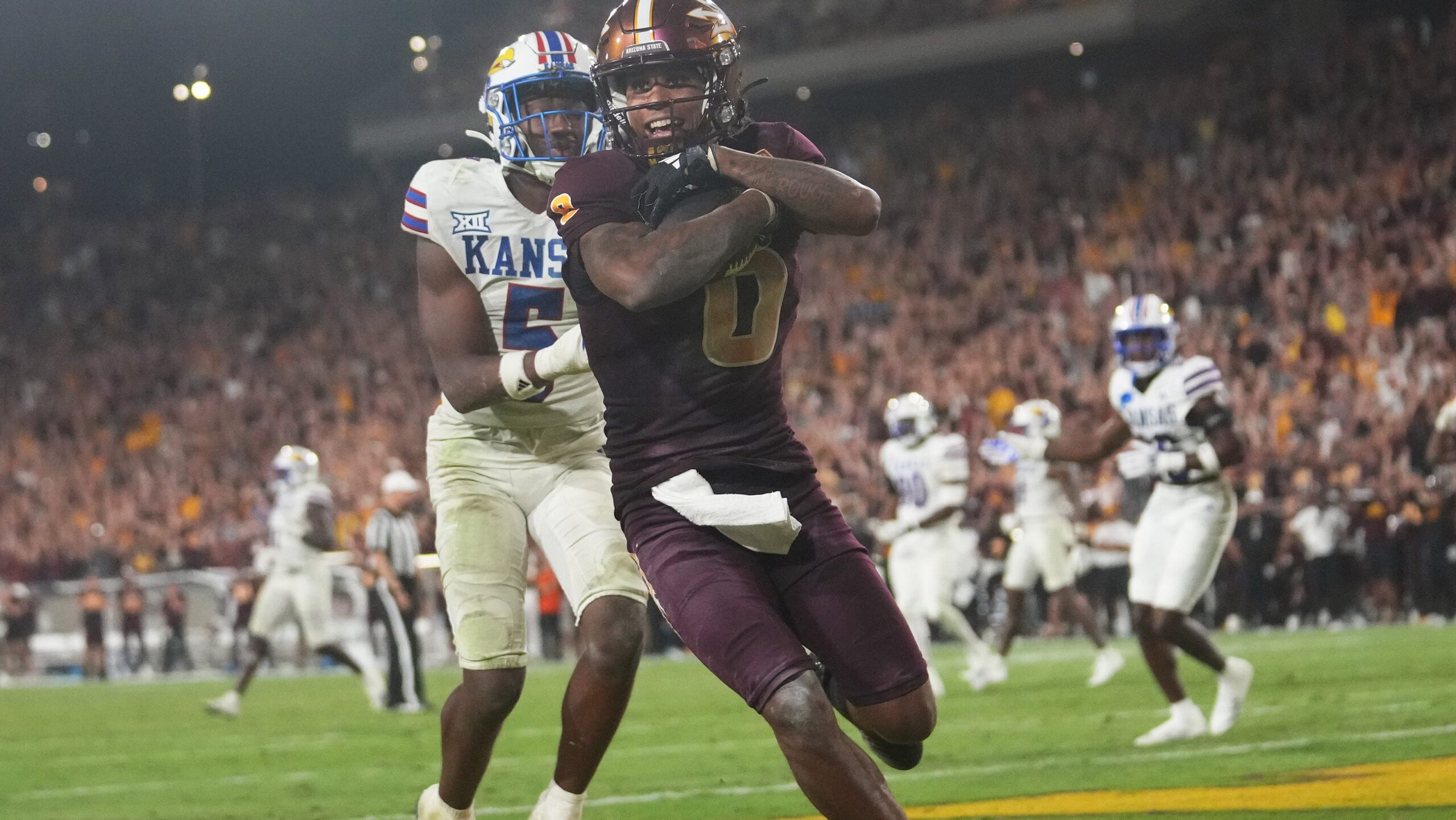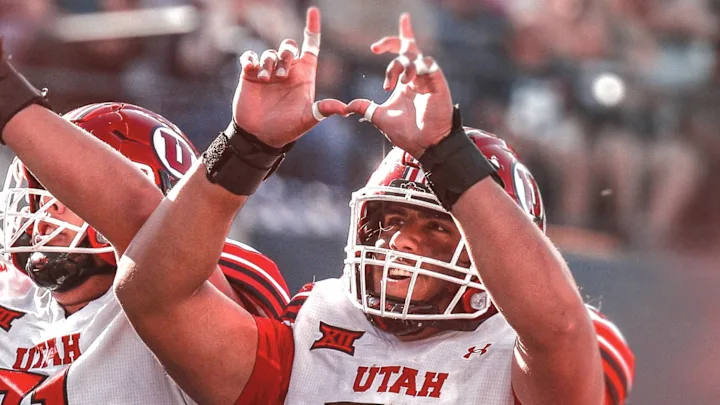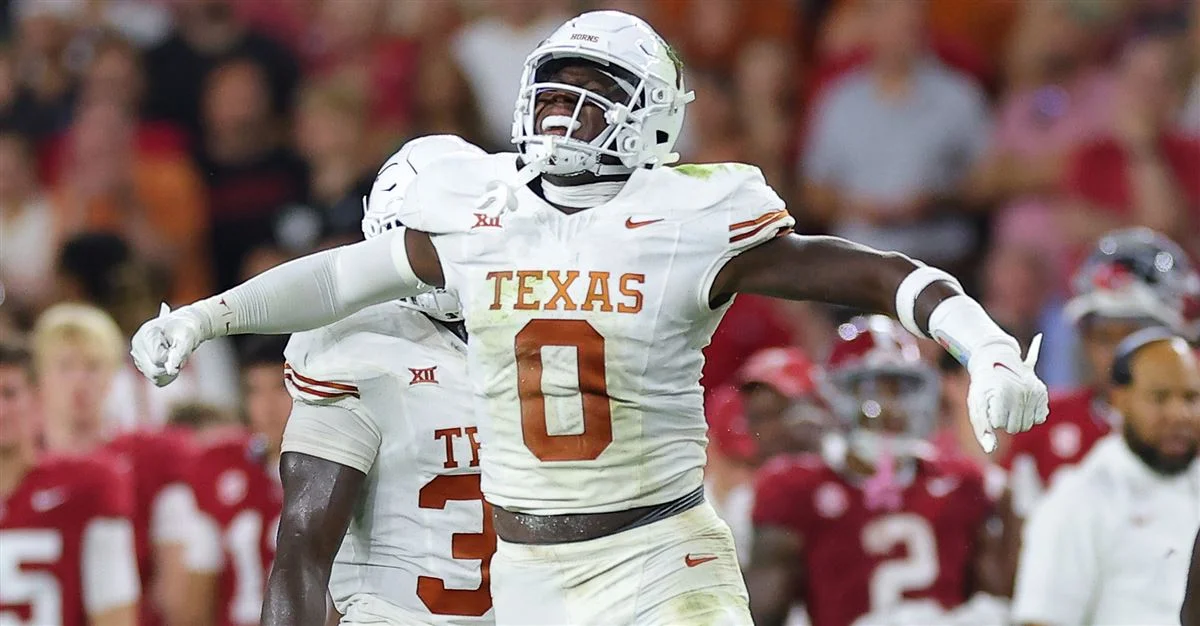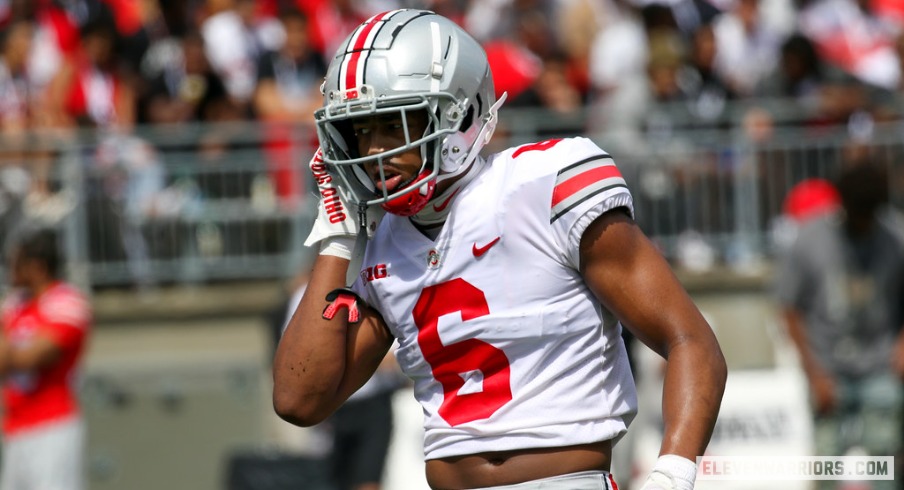By Charlie Campbell.
Send Charlie an e-mail here: [email protected]
Follow Charlie on Twitter @draftcampbell for updates.
This page was last updated April 3, 2013. Follow me @walterfootball for updates.
Position Review: Running Backs
Running Back Class
Early-round talent: C
Mid-round: A
Late-round: B
Overall grade: B+
2012 prospects vs 2013
Trent Richardson > Eddie Lacy
Doug Martin > Giovani Bernard
David Wilson > Johnathan Franklin
Isaiah Pead < Andre Ellington
LaMichael James > Christine Michael
Ronnie Hillman < Le’Veon Bell
Bernard Pierce > Montee Ball
Lamar Miller > Stepfan Taylor
The 2013 NFL Draft features a quality group of running backs, but last year’s class was very good, too, and its members had excellent debuts. A few years from now, the 2012 NFL Draft class could look even better. The list above features some good contributors, but is missing stud Redskins running back Alfred Morris. There were other contributors as well, like the Colts’ Vick Ballard and Eagles’ Bryce Brown, who went on the third day.
The 2013 NFL Draft class isn’t lackluster even though there may not be a running back who goes in the first round. Lacy has the best shot at going in the top 32. While this group could be without a first-round pick, there is good depth throughout the mid- and late rounds.
If you were to mix the classes, Lacy would go after Wilson and ahead of Pead. Bernard, Franklin and Ellington would also go ahead of Pead as well. Michael and Bell would go behind James and ahead of Hillman. Ball and Taylor would be behind Miller and Pierce.
There are a number of other good mid-rounders who could go ahead of some the backs in this group of eight. That group includes: Florida’s Mike Gillislee, Oregon’s Kenjon Barner, Nevada’s Stefphon Jefferson, LSU’s Spencer Ware, Oklahoma State’s Joseph Randle and Rutgers’ Jawan Jamison.
Safest Pick: Eddie Lacy, Alabama

Of the running backs in this class, Lacy is the safest bet to pan out as a good pro. His power and quickness is very tough on defenses. Lacy (6-0, 220) is very physical and has no problem picking up yards after contact. He also has some elusiveness with a good spin move that he uses often to get free for extra yards. Lacy enters the NFL with fresh legs and has not sustained a lot of wear-and-tear. He looks like a lock to be a quality starting running back.
Biggest Bust Potential: Montee Ball, Wisconsin

This was a tough call but I think there is bust potential with Ball. His name and college accomplishments could cause him to be over-drafted. Ball may not have the speed and quickness to be successful in the NFL. He doesn’t make up for being slow with physicality. With that combination, Ball may not have the skill set to be an effective running back in the NFL.
Running Back Rankings by Attributes
Natural Running Ability:
NFL prototype: Adrian Peterson, Vikings
- Eddie Lacy
- Giovani Bernard
- Christine Michael
- Johnathan Franklin
- Stepfan Taylor
- Montee Ball
- Le’Veon Bell
- Andre Ellington
Recap: There are still a lot of coaches in the NFL who want an old-school approach of a running-based offense. Plus, a lot of passing-led offenses want a back who can wear down defenses in the second half. All of these 2013 backs are good runners.
In terms of a runner to carry the load and take over games, Lacy is the top back in the 2013 NFL Draft. He is a strong back who beat defenses with his power and quickness. Lacy is built to take the pounding of the NFL and wear down defenses. In college, he got better as games progressed. Lacy has very good vision, balance, body lean and cutting ability. Many teams in the NFL are looking for a runner like him.
Bernard is a different type of running back from Lacy, but he is just about equal with Lacy in terms of running ability. Bernard is smaller and has had some injury issues already, thus Lacy is ranked first.
However, Bernard is a speedy back who is capable of ripping off long runs on any carry. He has excellent moves in the open field with good balance, body lean and vision. Bernard’s burst and second-gear speed make him a dangerous weapon to score on any carry and a very effective punt returner as well. He has more strength than one would think and employs a nice stiff arm. Bernard is a future starter and three-down back in the NFL.
Michael was one of the most talented backs in the Big XII the past couple of seasons. He runs with good speed, cutting ability and balance. Michael has some power and physicality to run through tackles.
Similar to Bernard, Franklin is a shifty runner who can break off long runs and has quickness with surprising strength. He ran roughshod over some tough defenses last season.
Taylor was the bell cow of his offenses in 2012 and followed up a solid season with a good performance at the Senior Bowl. He is a physical one-cut downhill runner who can rip off long runs if given an opening.
Bell and Ball were typical powerful Big Ten backs who had massive work loads. Each carried his offense and ran the ball with strength, vision and toughness.
Ellington is a shifty runner who may struggle to run between the tackles in the NFL.
Pass Receiving:
NFL prototype: C.J. Spiller, Bills
- Giovani Bernard
- Stepfan Taylor
- Johnathan Franklin
- Le’Veon Bell
- Andre Ellington
- Montee Ball
- Eddie Lacy
- Christine Michael
Recap: The passing-driven NFL has many offensive coordinators emphasizing running backs’ ability to help the aerial offense over their running ability. Coaches want backs who have good hands, run good routes and can rack up yards as outlet receivers. Bernard is clearly the best receiving back in the 2013 NFL Draft.
Bernard hauled in 47 passes for 490 yards with five touchdowns in 2012. He is dangerous weapon on screen passes since he is extremely adept at getting open and is extremely difficult for linebackers or safeties to cover. Bernard should be a tremendous weapon in the passing game in the NFL.
Taylor is just a hair behind Bernard. Taylor has great hands, runs good routes and finds a way to get open. He is already well-developed in the passing game of a West Coast offense. Taylor had 41 receptions for 287 yards and two touchdowns this season.
Franklin has developed his skills as a receiver, and if he isn’t a starting running back, he could quickly become the third-down back. Franklin has good hands, runs good routes and picks up yards as a check-down target. He had 33 receptions last year. Many coaches are going to love Franklin’s contributions to the passing offense.
Bell is an excellent receiver for such a big back. He didn’t rack up a lot of yards through the air, but he had 32 receptions last year and clearly understands how to get open. Bell could surprise defenses in the NFL if they neglect him in the passing game.
Clemson didn’t thrown the ball often to Ellington because the team had really good receivers and tight ends the past two seasons. However, he has some natural receiving ability which he illustrated at the Senior Bowl. Ellington looks good running routes and is a reliable receiver.
Ball had only 10 receptions for 72 yards as a senior, but that doesn’t tell the whole story as Wisconsin suffered through shoddy quarterback play. He had 24 receptions for 306 yards and six touchdowns in 2011. Ball is especially good on screen passes. He should be a solid third-down player in the NFL.
Lacy wasn’t bad in the passing game. He caught 22 passes for 189 yards and two touchdowns, but he was typically on the sidelines when Alabama was throwing since T.J. Yeldon took those snaps in 2012; Trent Richardson took those snaps in 2011. Lacy will need more development in his pass-receiving skills at the next level.
Michael had only eight receptions in each of the past two seasons. Texas A&M used Cyrus Gray among others as the receiving backs. Michael showed some pass-receiving ability at the East-West Shrine, but he needs more development for this skill in the NFL.
Pass Blocking:
NFL prototype: Ahmad Bradshaw, Free Agent (Giants)
- Stepfan Taylor
- Johnathan Franklin
- Giovani Bernard
- Andre Ellington
- Le’Veon Bell
- Montee Ball
- Eddie Lacy
- Christine Michael
Recap: This attribute is huge for offensive coordinators. If a running back can’t pass protect, he is going to have a hard time seeing the field in the NFL. If the defenses know that a running back isn’t trusted to protect the quarterback, it is an immediate tip about what the play is going to be.
Coaches want multiple backs with pass-protection skills. The importance of blitz pickup and pass blocking is increasing every year for running backs. The college game has caught on to this, and the 2013 group of running backs is exceptionally prepared compared to past years.
Taylor is tremendous as a pass-blocker and clearly is the best of this group. He is fearless taking on linebackers and was excellent at protecting Andrew Luck, among others. The Stanford coaching staff did a great job of preparing Taylor for that role in the NFL. He is smart about which blitzers to pick up and is very good at nullifying their rushes.
Franklin is extremely good in pass protection. There are times when he dishes out some devastating blocks. At the Senior Bowl, Franklin looked phenomenal in the blitz protection drills. He should be a trusted blocker in the NFL.
Bernard and Ellington both do well for smaller backs. They’ll need some work for the next level, but should become reliable blockers over time.
Both Bell and Ball flashed some nice ability in blitz protection. Their offenses were ground based, and when the teams did pass, those two backs were typically leaving the backfield, so Bell and Ball have less experience compared to others.
Lacy and Michael both have the potential to be good in pass protection, but they didn’t get much development at it in college.
Yards After Contact:
NFL prototype: Ray Rice, Ravens
- Eddie Lacy
- Le’Veon Bell
- Christine Michael
- Stepfan Taylor
- Johnathan Franklin
- Montee Ball
- Giovani Bernard
- Andre Ellington
Recap: For running backs to be consistently successful in the NFL, they have to have the ability to get yards after contact. Breaking tackles is critical to moving the chains and setting up good down and distance. Lacy is the clear No. 1. It usually takes multiple defenders to bring him down and he’s constantly bouncing off defenders to pick up more yards on the ground.
Bell and Michael are very similar. They power through arm tackles with ease, and there were plenty of plays that they took defenders for a ride as they churned ahead for more yards. There are times where Michael runs angry and punishes defensive backs.
Taylor is a physical back who finishes his runs well. He does a good job of fighting for extra yards and falling forward. Franklin and Ball can do a lot of that as well. There were plays on which Franklin surprised defenders by lowering his shoulder and running through them.
Bernard isn’t the biggest of backs, but he is hard for defenders to get a hold of. Bernard slips out of tackles and uses a stiff arm in the open field to continue his runs. He is tougher and more physical than he is given credit for.
There is a clear big drop off to Ellington. He added weight before his senior season and improved his ability to break tackles. In the NFL though, Ellington probably won’t be a back who gets a lot of yards after contact.
Zone-Blocking Runner:
NFL prototype: Arian Foster, Texans
- Eddie Lacy
- Christine Michael
- Giovani Bernard
- Johnathan Franklin
- Andre Ellington
- Le’Veon Bell
- Stepfan Taylor
- Montee Ball
Recap: The zone-blocking scheme calls for backs to have quickness and physicality. They need the ability to follow the moving wall plus use vision and anticipation to see the hole opening and make one cut to run downhill. It is a different type of running compared to a set, designed play.
Lacy showed the capacity to execute the zone-blocking scheme in 2012. He had a number of long carries on stretch plays. The Alabama offensive line was so good that the team did some of everything, so Lacy is prepared for any system.
Michael has a lot the attributes to execute in zone. He is a one-cut downhill runner who has patience and vision. A scout from a zone-blocking team I spoke with feels that Michael was a very good fit for his franchise’s ground scheme.
Bernard, Franklin and Ellington have the speed and athleticism to be good fits in a zone scheme. Because they’re smaller, they’re behind Lacy and Michael.
Bell, Taylor and Ball are more downhill runners behind a power offensive line. They all come from power man-blocking schemes at the college level. I have serious doubts that Ball would thrive in a zone-blocking scheme.
Power-Man Runner:
NFL prototype: Marshawn Lynch, Seahawks
- Eddie Lacy
- Christine Michael
- Stepfan Taylor
- Giovani Bernard
- Montee Ball
- Le’Veon Bell
- Johnathan Franklin
- Andre Ellington
Recap: Alabama featured Lacy as its power runner between the tackles, and he did an excellent job as a senior. Lacy should be good at executing an NFL power-man scheme almost immediately.
Michael and Taylor both ran well behind power-man offensive lines. Texas A&M and Stanford both have had NFL-style rushing offenses, and the backs saw good preparation for what they are heading into. Bernard is comparable to Michael and Taylor, and there really isn’t a significant difference except Bernard isn’t as big as those two.
The Badgers’ offense had a great power-man scheme the past few seasons with Ball as its feature back. He may not have the speed and quickness to be a lead back in the NFL, but he could do well as a rotational back in a man scheme. Bell is similar to Ball with his experience in a power scheme. At Michigan State, Bell was very good in power scheme because he could bail out his linemen with his power if there was a missed block.
Franklin could run well in a man scheme. Ellington could have issues with dancing behind the line if his blocking doesn’t make it easy for him.
Elusiveness:
NFL prototype: Adrian Peterson, Vikings
- Giovani Bernard
- Johnathan Franklin
- Andre Ellington
- Christine Michael
- Eddie Lacy
- Stepfan Taylor
- Montee Ball
- Le’Veon Bell
Recap: Bernard is definitely the most elusive runner in this draft class. He jukes defenders, spins away, cuts around them and uses his speed to run by them. Defenders really struggle to get a firm grasp on Bernard.
Franklin and Ellington have some elusiveness in the open field. Both dodge tacklers and have a nice second gear after reaching the secondary. Franklin had a knack for seeming to be stopped, but slipping away for more yards.
Michael is a strong runner who can weave through defenders in the open field. As a runner, he has a lot of balance with some moves and cutting ability to along with his size-speed combination.
Lacy has some elusiveness despite being a big target. His spin move is excellent and he uses it all the time. While Lacy isn’t the fastest, he uses his strength to be elusive and not let tacklers get control of him.
Taylor, Ball and Bell don’t juke a lot of defenders, but they aren’t bad. Taylor, Ball and Bell each have some elusiveness, but all are more straight-ahead runners.
Breakaway Speed:
NFL prototype: Chris Johnson, Titans
- Giovani Bernard
- Johnathan Franklin
- Christine Michael
- Andre Ellington
- Eddie Lacy
- Stepfan Taylor
- Montee Ball
- Le’Veon Bell
Recap: Bernard is the clear No. 1. He has shown the ability to break off long touchdown runs. There were many plays that Bernard produced long runs by turning the corner and getting vertical. He is the fastest back of the early- to mid-rounders.
Franklin has the speed to break off long runs, too. He consistently ripped off long runs for UCLA in 2012, including some against the better defenses he faced. Franklin quantified his speed at the Combine. Michael and Ellington can rip off some long runs as well.
Even though Lacy is a big, powerful back, when he breaks downfield, he is touch to catch. Lacy had a number of longer touchdown runs and showed the capacity for that late this season when other players were wearing down. If Lacy gets in the open field, he is tough to drag down.
Taylor didn’t run well at the Combine, but he’s faster in the games. The senior had some long touchdown runs in 2012.
Ball made some long touchdown runs in his collegiate career, but a lot of them came against some weak competition. The slow Big Ten is nothing like the NFL. Bell and Ball don’t look like they will have the speed to rip off many long runs at the next level. Although Bell ran faster than expected at the Combine, the NFL safeties and cornerbacks will probably be able to chase him down.
|
|
NFL Picks - Dec. 13
NFL Power Rankings - Dec. 10
2026 NFL Mock Draft - Dec. 10
Fantasy Football Rankings - Sept. 1




